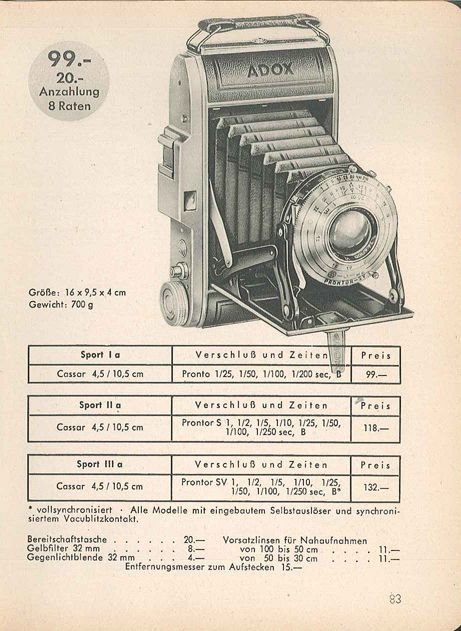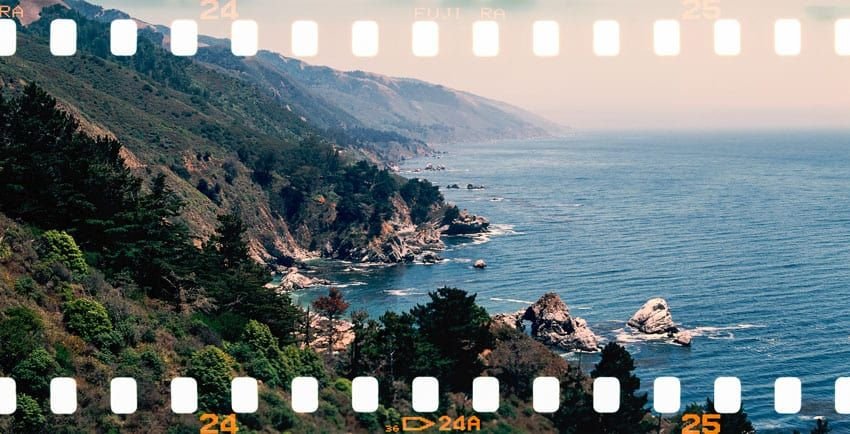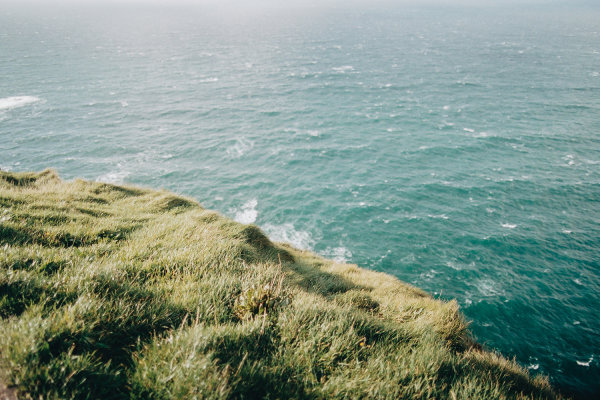Article-at-a-Glance
-
Classic brands like Kodak and Leica are still revered for their timeless designs, with many models becoming sought-after collectibles.
-
For those new to film photography, understanding film types and camera settings is crucial to getting the most out of a retro folding camera.
-
The global community of film enthusiasts offers a supportive environment for sharing knowledge, experiences, and fostering a love for analog photography.
Popular Models Sparking the Trend
Among the plethora of vintage cameras, certain models stand out for their enduring design and reliability. Brands like Kodak, with their iconic Kodak Retina series, with their 3A Folding Pocket, are just a couple of the names that continue to resonate with photographers.
Kodak Retina

Kodak 3A Folding Pocket

And it’s not just the big names that are getting attention. Smaller, lesser-known brands are being rediscovered, with photographers appreciating the unique features and designs that were ahead of their time. It’s a treasure hunt where every camera comes with its own story.
Getting Started with a Retro Folding Camera
Before you start, it’s important to understand that film photography is an art that requires both patience and practice. Embrace the learning curve, and you’ll find a rewarding hobby that not only produces beautiful images but also teaches you the fundamentals of great photography.
• Firstly, handle your camera with care. These are often delicate machines that have been around for decades. Secondly, get to know your camera. Read the manual if available, understand how to load film, and practice folding and unfolding the camera if applicable.
Finally, start shooting. Don’t be afraid to make mistakes. Each roll of film will teach you something new, and that’s part of the beauty of film photography.
Choosing Your First Film Camera
• A good starting point is a medium-priced camera with a clean lens and a fully functioning shutter. Ensure the bellows (the foldable part) have no holes or leaks, as these can ruin your film.
• Many people claim that certain types of cameras are difficult to grasp or operate, but I suggest disregarding their opinions. I believe it is essential to select the camera that you desire and learn with that specific model. The best way to choose the camera of your dreams is to visit an old camera store, which can be found in every country or state. Personally, I visited a vintage camera display in Germany without any knowledge of film cameras. Among the many options, one camera immediately caught my attention and I knew it was the one for me.
• I advise you to choose a camera that resonates with you personally. While my first camera was deemed “challenging to use” initially, I discovered through my first roll of film that it was actually beginner-friendly and this convinced me that the concept of a ‘difficult camera’ is a myth; there are only cameras that require more time and effort to master.
• Write down the camera models that caught your attention so you can compare prices and find a more affordable option, as camera stores tend to have higher prices.
I recently acquired an Adox Sport IIIa, a perfect choice for new film photographers. While browsing at a vintage camera store, I stumbled upon this gem for a mere $40. The knowledgeable employees at the shop cautioned me that the cameras were potentially non-functional, despite appearing immaculate. Trusting my instincts, I purchased the camera and was pleasantly surprised to find that it worked flawlessly. It seems that these enduring folding cameras have stood the test of time, proving their reliability and longevity. At times, the employees may not be able to ensure the functionality of the cameras and may claim that they are not in working order. However, these folding cameras have a reputation to live forever.

Here are a few tips for selecting your first retro folding camera:
-
Do your research: Read reviews and ask for recommendations in photography forums or from experienced photographers.
-
Check the condition: Look for signs of wear, but don’t shy away from cameras with cosmetic blemishes—they often work just as well as pristine ones.
-
Think about availability of film: Make sure the camera uses film that’s still readily available. If your camera takes 120 film rolls, try using 35mm roll, shooting with the wrong film will get shoots like these bellow.

Understanding Film Types and Camera Settings
Understanding film types is crucial. There are different formats—35mm is the most common, but medium format film offers higher quality at a larger size. Each film has an ISO rating, indicating its sensitivity to light. Lower ISO films require more light but provide finer grain, while higher ISO films work better in low light but are grainier.
As for camera settings, start with the basics: aperture, shutter speed, and focus. Aperture controls the amount of light entering the lens and affects depth of field. Shutter speed dictates how long the film is exposed to light. Focus, of course, is about getting the sharpness where you want it. Mastering these will greatly enhance your photography.
Composing Shots with Intention
With limited exposures on a roll of film, composing your shots with intention becomes second nature. Think about the rule of thirds, leading lines, and framing. But also, don’t be afraid to break the rules. Sometimes the most compelling images are those that defy conventional composition.
Pay attention to the edges of your frame, the way elements intersect, and the balance between light and dark. With practice, you’ll develop an intuitive sense of composition that elevates your photographs from simple snapshots to evocative images.

Developing Skills Alongside Your Photographs
Photography is a skill, and like any skill, it gets better with practice. Each roll of film is an opportunity to learn something new. Maybe you’ll experiment with double exposures or long exposures. Maybe you’ll delve into the world of street photography or landscapes.
And when your photographs come back from the lab, take the time to review them. Try writing down what setting you used to see and learn what worked? What didn’t? Why? This reflection is as important as the shooting itself—it’s how you grow as a photographer.
Forums and Groups to Enhance Your Journey
Joining a community of like-minded enthusiasts can significantly enhance your experience with retro folding cameras. Online forums and social media groups are fantastic places to share your work, get feedback, and learn from others. Sites like Reddit, Discord, Facebook group and Flickr host vibrant communities where you can ask questions, find inspiration, and even buy or trade equipment. Local photography clubs can also offer a sense of camaraderie and the opportunity to participate in photo walks and hands-on workshops.
Exhibitions and Competitions for Film Photography
Exhibiting your work can be incredibly rewarding, and many exhibitions now feature categories specifically for film photography. Participating in competitions can push you to refine your skills and can be a wonderful way to gain recognition. Look for local galleries, community centers, and photography organizations that host regular exhibitions. Not only can you showcase your work, but you can also see the work of others, which is a great way to learn and find inspiration.
FAQs
What Makes Retro Folding Cameras Desirable?
Retro folding cameras offer a blend of portability, mechanical beauty, and a hands-on approach to photography that digital cameras often lack. They force photographers to slow down and consider each shot, resulting in a more mindful and satisfying photographic process. Moreover, the aesthetic of film photos, with their unique grain and color rendition, is something that simply can’t be replicated with digital sensors.
Can I Integrate Digital Techniques with Film Photography?
Yes, you can integrate digital techniques with film photography. After developing your film, you can scan the negatives to create digital files that can be edited with software like Adobe Photoshop or Lightroom. This hybrid approach allows you to enjoy the best of both worlds—the tactile experience of shooting with film and the convenience of digital post-processing.
Where to Find Film for Vintage Cameras?
Finding film for vintage cameras is easier than you might think. Many photography stores, both brick-and-mortar and online, still stock a variety of film types. You can find many types of film online or in your local foto shop. I buy my film at Freestylephoto.com where the film is affordable!
How Do I Maintain and Repair a Retro Folding Camera?
Maintaining a retro folding camera involves regular cleaning and careful handling. Store your camera in a dry, cool place to prevent mold and rust. If your camera needs repairs, it’s best to consult a professional who specializes in vintage camera repair, as they have the expertise and tools to handle delicate mechanisms without causing further damage.
Are Retro Cameras a Good Investment?
Retro cameras can be a good investment for both the sentimental value and the potential increase in monetary value. Some models have become collectors’ items and have appreciated over time. However, the true value lies in the enjoyment and unique experiences that come with using these cameras, as well as the timeless images they can create.
As you embark on your journey with retro folding cameras, remember that the real joy comes from the process: loading the film, composing the shot, and waiting for the final prints. It’s a form of art that teaches you to see the world differently, to appreciate the nuances of light and shadow, and to cherish each captured moment. So go ahead, let the comeback of these beautiful instruments inspire you to create and keep the legacy of film photography alive.



